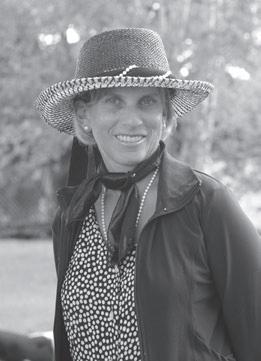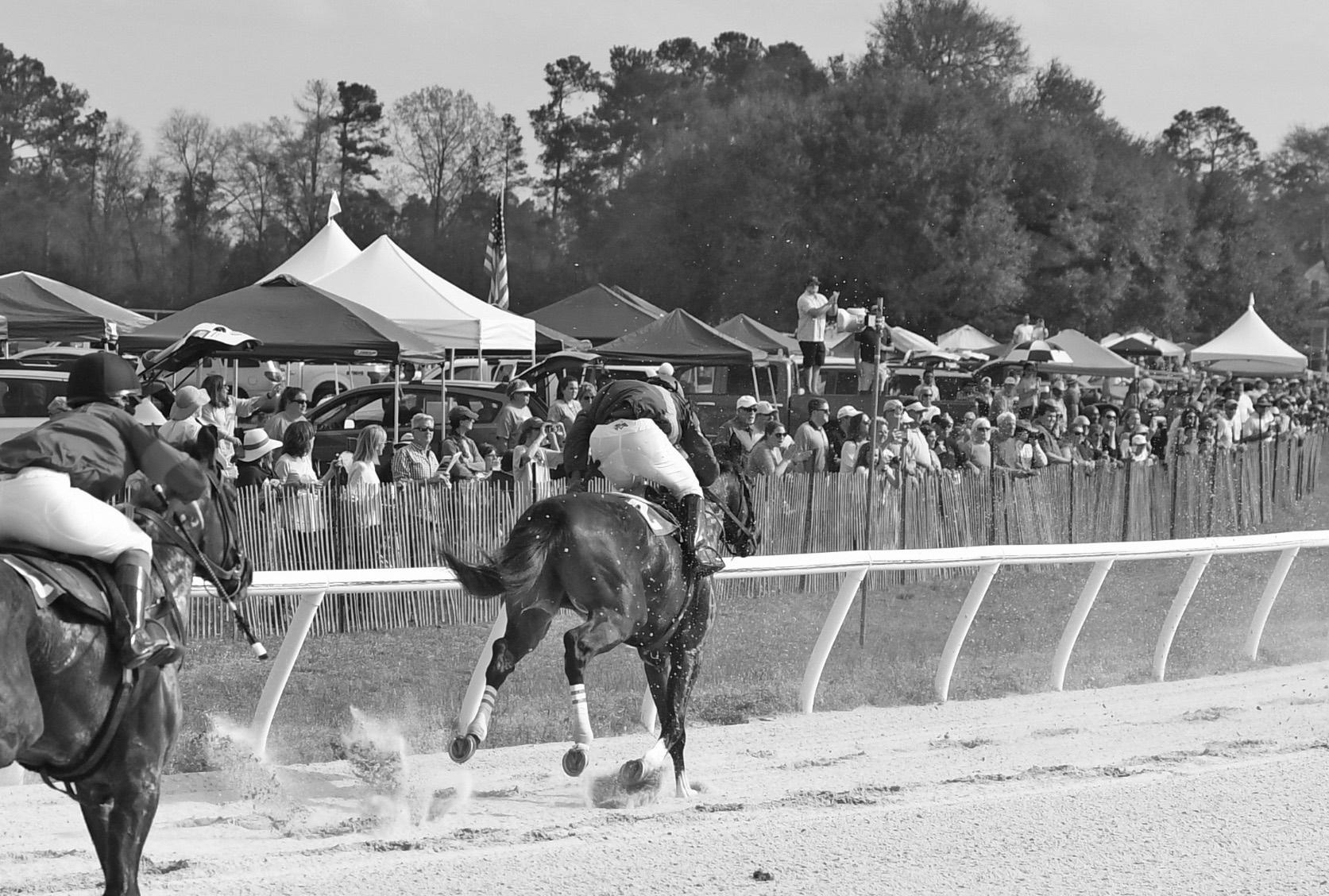
6 minute read
Ask the Judge
Questions about Dressage With Amy McElroy
Amy McElroy is an FEI competitor, and a USEF S judge. She is qualified to officiate at any USEF recognized national show at all dressage levels. She rides, trains and teaches at Fair Lane Farm in Aiken and judges between 15 and 20 dressage and eventing shows each year. In her popular Ask the Judge column, she answers readers’ questions about dressage. Do you have a question for Amy? Send her an email at McElroyDRM@aol. com, or visit her website: www.amymcelroy.com.
Advertisement
Dear Amy
I just made my debut at Second Level, riding Test 1. My scores for the shoulder in were quite low. I was very disappointed and surprised because I thought I was doing it correctly. Can you tell me how to ride a shoulder in that can score well?
Dear Moving Up,
Advancing to the Second Level is a nice accomplishment. I would be glad to go over the shoulder in and explain how the pattern should be ridden correctly.
Whenever you advance a level, as in this case from First Level to Second Level, it is important to read and understand the “purpose” of the higher level and how it differs from the previous level. The purpose of a test is clearly written on all test sheets. This purpose changes from level to level, but is the same for all the tests in a particular level. The purpose of the level is taken into consideration in all movements of your test, including the shoulder in.
Let’s take a look at the purpose for Second Level. This is what is stated:
“To confirm that the horse demonstrates correct basics, and having achieved the thrust required in First Level, now accepts more weight on the hindquarters (collection), moves with an uphill tendency, especially in the medium gaits, and is reliably on the bit. A greater degree of straightness, throughness, balance, and self-carriage is required than at First Level.”
Another important resource when you are riding any new tests or movements is to review the “directives.” For each individual scoring box on any test, there is a clear set of directives written on the test sheet. These tell you what qualities the judge will be assessing. The directives for the shoulder in at Second Level are “angle, bend, balance, engagement and quality of trot.”
Finally, it is always important to know what the USEF rulebook states about the movement. According to DR1113f Shoulder in: “This exercise is performed in collected trot. The horse is ridden with a slight but uniform bend around the inside leg of the rider, maintain cadence at a constant angle of approximately 30 degrees. The horse’s inside foreleg passes and crosses in front of the outside foreleg, with the lowering of the inside hip. The horse is bent away from the direction in which it is moving. If the shoulder in is performed on the long side or on the centerline, the horse should be straightened after the shoulder in, before going into the corner. If the movement that follows the shoulder in is a circle at any point, or a turn left or right at any point other than the four corners, the horse should not be straightened.”
When riding the shoulder in patterns for Second Level Test 1, try to practice while keeping the purpose, directives, and the words of the rulebook in mind. In this test it is especially important to ride accurately, as this movement has a coefficient of two (it is worth double points) and can also positively or adversely affect the collective marks, particularly in the submission and effective use of aids scores.
Second Level requires you to be riding a collected trot (think about balance and maintaining active hindquarters with the poll the highest point), with a steady and even connection (reliably on the bit.) According to the test, you ride shoulder in on the long side, from the letter K (the first letter after you come out of the corner) to the letter E at the midpoint of the long side. At E, you turn towards the letter B on the opposite side of the arena. The next movement is to turn left at B and continue in a shoulder in from the letter B to the letter M, which is the last letter on the long side before the corner. At M, you straighten out before rounding the corner onto the short side.
So how do you ride this movement? Start by being ready before it starts. As you come through the corner after A on the short side, you should already be preparing for the shoulder in. When your body reaches the letter K shortly after this corner, you should be in shoulder in, not preparing for it. Make sure that the movement is clear. You should have a 30 degree angle. This means the horse’s outside shoulder comes in 30 degrees from the track, not just his head or neck. Also be careful not to allow the horse to drift away from the track. Don’t overdo the angle so that your horse’s hind legs cross as well as his front legs – that would be a leg yield, not a shoulder in. These are just a few of the common problems that can detract from a score.
As you approach E, prepare for your turn to the right similar to the way you would curve onto a centerline. You should not straighten your horse after the shoulder in: the shoulder in and your turn combine to count as one score worth double points. On the line from E to B, you should have enough time to straighten your horse from nose to tail for at least one stride. Next, as you approach B, prepare for a left bend and make a curving turn onto the long side. Then, do not straighten your horse: immediately begin your shoulder in, which you should maintain until M, which is the last letter in the long side before the corner. At M, straighten your horse completely before going into the corner. These two moves will be combined for a score worth double points.
The key to riding a proper shoulder in is correct bend. A good exercise is practicing riding 8- and 10-meter circles. This will help you to learn how to maintain the bend required for the shoulder in. Essentially, a shoulder in is the first step of a circle ridden on straight line. The rider’s position and aids are also similar to riding a small circle; except that the outside rein and leg aids prevent your horse from staying on a circle. The inside leg should be at the girth to help keep the horse moving forwards, stay on the track and keep the bend. It is most important to maintain a consistent angle and regularity in the trot. These little details, combined with accuracy are sure to impress your judge.
Learning to ride a correct shoulder in not only gives you a better score at a show, it can also improve your horse’s obedience. Just always be careful not to exaggerate the bend; be certain the forehand and hindquarters are on different tracks, and always ride forward!
I hope this gives you more insight into Second Level Test 1 and how to ride shoulder in. Wishing you much success in your Second Level journey: This is just the beginning!










